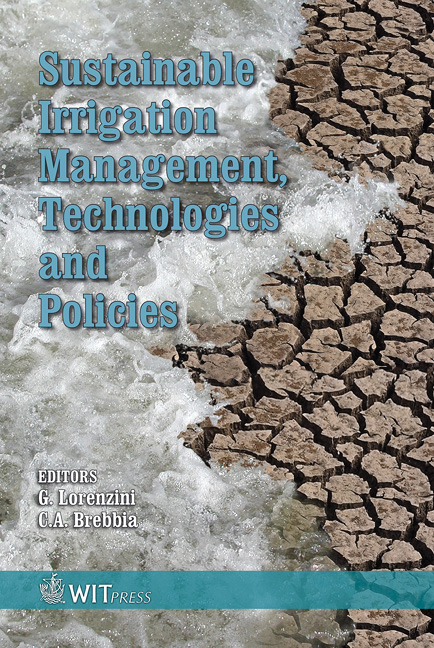Assessing Canal Seepage And Soil Salinity Using The Electromagnetic Remote Sensing Technology
Price
Free (open access)
Transaction
Volume
96
Pages
9
Published
2006
Size
1,063 kb
Paper DOI
10.2495/SI060071
Copyright
WIT Press
Author(s)
F. Cassel S. & D. Zoldoske
Abstract
Canal seepage and soil salinity are two major problems in irrigated areas of California’s Central Valley, USA. Seepage is very common throughout the vast network of irrigation canals found in California. Most of these canals are earthen structures, where seepage contributes to the loss of millions of litres of water annually. Salinity problems are attributed to saline parent material, clayey soils, intensive irrigation, shallow water tables, and inadequate drainage that prevents the leaching of soluble salts. Several irrigation management practices, including sequential reuse of drainage waters within farm boundaries, are currently being tested in the region. Such practices are expected to reduce drainage volume, conserve irrigation water, and contribute to soil reclamation. Canal seepage and soil salinity can be assessed very accurately using the electromagnetic (EM) remote sensing technique. When coupled with a GPS and data logging capabilities, a mobilized EM system can provide automated and geo-referenced measurements over large areas. The study objectives were to locate seepage along irrigation canals and assess soil salinity in agricultural fields using the EM approach. Calibration of the EM data was performed following soil sampling. Samples were analyzed for electrical conductivity, texture, and moisture. Surface maps describing spatial distribution of these parameters were generated using GIS. The study suggested that the location of seepage could be detected rapidly and cost-effectively with the EM meter. The salinity assessment survey indicated that soil salinity levels ranged from 1 to 39 dS/m, with high spatial variability observed in most areas. Elevated salinity values were associated with poor drainage management. Growers and water agencies can utilize information from this study to develop water management and conservation strategies. Keywords: canal seepage, soil salinity, electromagnetic induction, drainage.
Keywords
canal seepage, soil salinity, electromagnetic induction, drainage.





